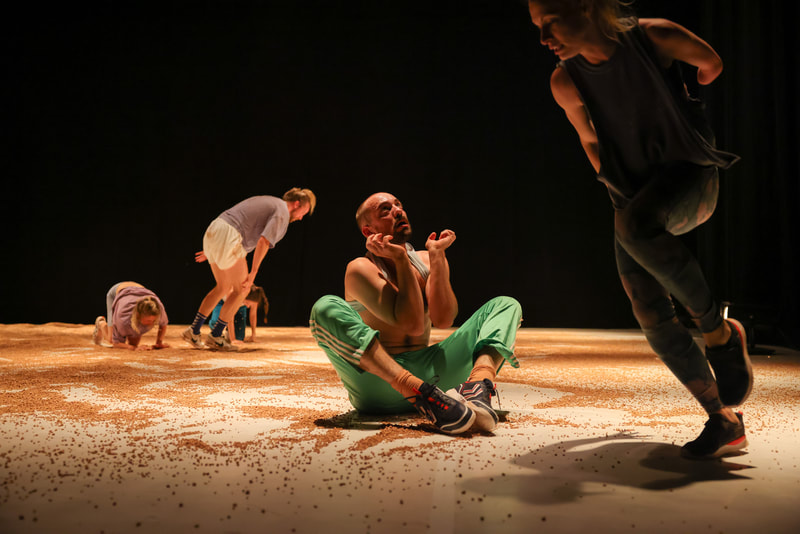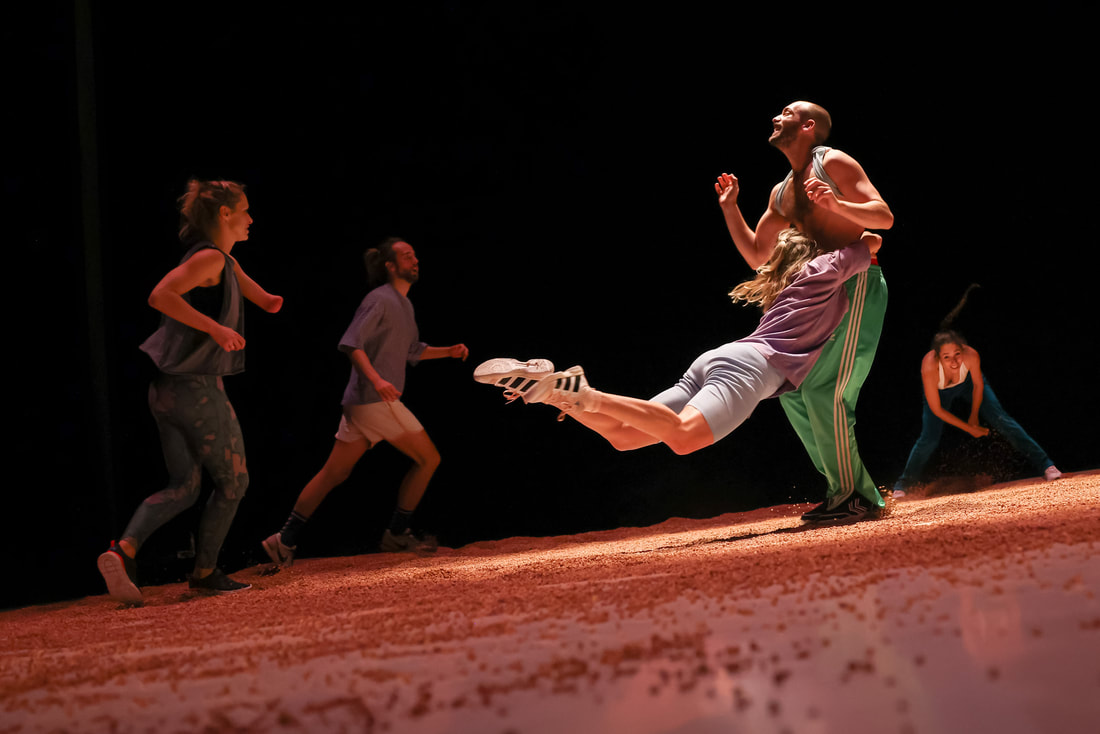KELLY HOOY reviews Starving Dingoes at The Place.
Starving Dingoes is both a haunting and electrifying spectacle of dance. Choreographer Lea Tirabasso presents her latest work without sparing an ounce of sheer madness. Starving Dingoes encapsulates the unbridled ferocity in humanity’s urgency for survival in the face of the brutal offerings of life. For an hour, five dancers, Catarina Barbosa, Laura Patay, Karl Fagerlund Brekke, Alistair Goldsmith and Laura Lorenzi, navigate an ever-mutating terrain of granulated rubber on stage, letting their bodies succumb to motions of an unmistakably bestial quality. Starving Dingoes forces us to gaze inwards and grapple with our animalistic instincts when inevitable death comes creeping our way.
As the stage is illuminated, the group of dancers awaken in a barren landscape of golden granules strewn across their bodies. The set, created by designers Nicolas Tremblay and Thomas Bernard, hints simultaneously at an ancient and post-apocalyptic world, alluding to the grandeur of time. The dancers begin to chant incomprehensibly, worming their way around the stage on their bellies with seemingly incapacitated limbs. Their bodies paint strokes across the sea of granulated rubber, making their mark on the world. Infantile in posture, yet militaristic in coordination, the dancers represent a premature sense of order before disarray ensues.

Not long afterwards, the group seeps into a dysfunctional frenzy. Accompanied by Johanna Bramli and Ed Chivers’ heavy, thumping score, the dancers prance, shout and convulse to the throbbing beat. In an unpredictable sequence, the dancers converge and encircle a member, then split up sporadically to all ends of the stage. After some time, the audience stops probing at the peculiarities of the performance and gets swept into the hypnotic continuity of this fluid dance, letting sound and movement guide the viewing eye without pedantry.
A primary motif Tirabasso attempts to incorporate is the biological phenomenon of apoptosis, programmed cellular death. With the help of oncologist Simone Niclou and principal cancer scientist Alex Gentry-Maharaj, Tirabasso’s choreography marries dance and science, letting the body tell the story of what happens within it. Like cells under a microscope, the five dancers channel unbridled energy, contorting their bodies in all formations to convey the abstraction of cellular activity. If there is a kind of death that is prophesied, the dancers seem to wrestle it with all their might.

Strange, eccentric and furious, this piece left me with a lot more questions than I had anticipated. Upon looking up the symbolism of the titular dingoes, I came to learn about their prevalence in aboriginal Australian mythology; an emblem of the creation of all life. There could not be a name more apt than Starving Dingoes for a dance about life and death. I imagine a starving dingo would always exist in a liminal space between the two, bearing a primal thirst for life despite having surrendered to the inescapable close of another day. As my favourite quote from Interstellar (2014) goes, ‘Our survival instinct is our greatest source of inspiration’. While we’re still alive, some of us are inspired to dance.
Starving Dingoes was performed at The Place on 12 February 2022.
Featured Image: photograph by Bohumil Kostohryz. Image source: www.leatirabasso.com.





